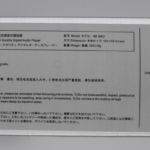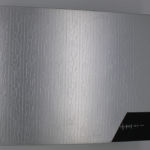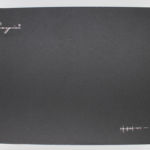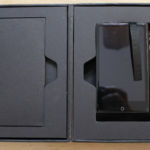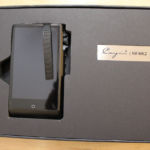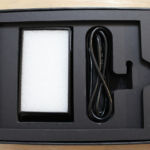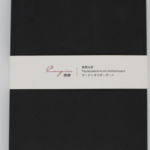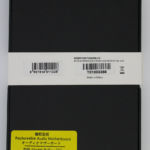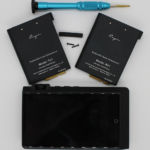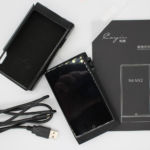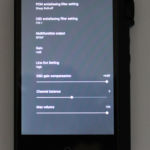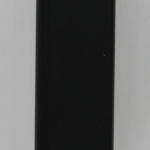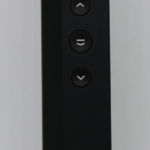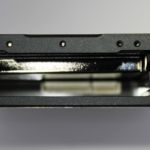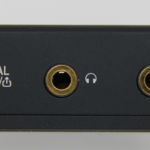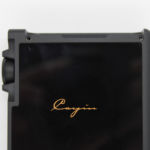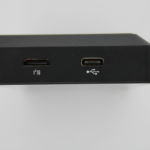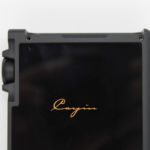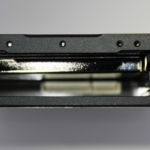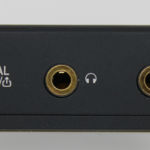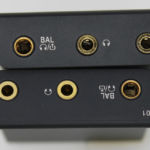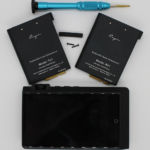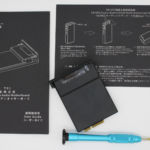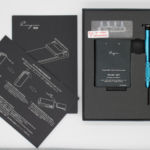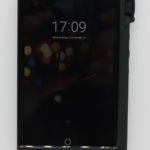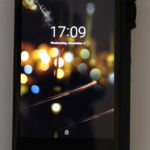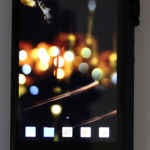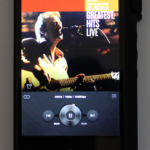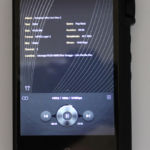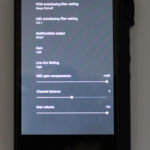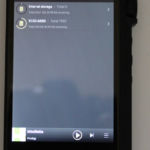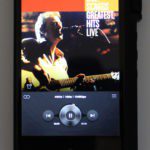Cayin N6ii
disclaimer: I was sent the Cayin N6ii and YB04 as part of the Cayin North American Review tour. Thank you to Cayin for providing the opportunity and trusting me with their gear. If you have an interest in Cayin products, more details can be found at Cayin’s Website. Cayin products are sold in North America by Musicteck.
Unboxing / Packaging:
The N6ii comes in rather fancy packaging as is expected for a near flagship product. An outer silver slipcover has most of the pertinent information on the spine of the cover and an inner book-fold package has the player on left along with a name placard with the charging cable, case, and accessories hidden on the right under the manuals. The tour package also shipped with a 4.4mm male to 2.5mm female adapter for those using balanced output. My unboxing experience may be slightly different than the retail experience as I was not the first member on the tour and cannot guarantee that all was in the same spot it was originally.
Build:
The first thing one notices when you lift the N6ii out of the packaging is the heft of the unit. It is not particularly large, with roughly the same dimensions as the Opus#1S and slightly smaller than the Khan, but weight is probably double that of the Opus unit. The shell is anodized aluminum with a glass front and rear. The Screen takes up nearly the entire front with a roughly 1.5 cm bezel at the lower edge. Controls are all on the right side of the unit with a volume wheel that also pushes in for wake/sleep/power functions and reverse, play/pause, and forward buttons. All other control is handled through touch screen apps. The left side of the player has the sd-card slot while the base has the I2s and USB type C ports. Modules are added and removed via a slot at the top of the player with two small screws holding modules in place once installed. The screw holes are visible in the 6th picture below and while the edge connector on the module is enough to hold the module in place without the screws, the extra security is nice. The fitted leather case that ships with the unit is easy to put on and take off but not loose enough to shift in use and provides good access and protection to the player. all ports and slots are exposed except for the screws to change modules and even that can be done by pushing the player about 1/2 an centimeter up in the case to expose the screws.
Internals:
One of the biggest calling cards of the N6ii is the replaceable Modules (Audio Motherboards in Cayin speak) that allow you to upgrade your DAP rather than having to replace it when a newer chip comes out. The N6ii separates the functions into operating components which are in the core unit, and audio components, which are on a removable daughter card. For now, we will look at what is in the base unit with the modules getting their own discussion a bit farther down the page. The core of the N6ii is a Snapdragon Quad Core processor (listed by CPU Z as an ARM Cortex-A53 at 1.4gHz) with 4gb of RAM and 64gb (51 usable) of storage capacity. Initially the N6ii shipped with Android 8.1 (oreo) but an upgrade to a later version is promised once fully tested and the N6ii does support OTA upgrades so updating to the latest version is a fairly straight forward operation. Google play is supported and is unlocked to allow load of just about anything the end user would like and with the internals following qualcomm’s reference design, most applications will work on the N6ii unless they require the phone radios to operate correctly. The Screen is a 4.68 inch (768×1280) touch enabled model and sports a good clear picture at 319 dpi. Wifi supports both 2.4 and 5gHz bands and worked well on both bands in my testing. Bluetooth is listed as 4.2 with an advanced Hi-Res Codec and supports AptX and LDAC for connections up to 96kHz. Rounding out the base module, the N6ii has a micro-SD card slot and USB-C port for input and supports use of OTG for external hard drive or flash drive content. I tested the micro-sd card slot with 400 and 512gb cards and had no issue with either. As a kudo to the N6ii even with a near full 512gb card, library load and refresh times were very good. Much faster than some competitive models. As outputs, the USB port can also be used for USB output to an external DAC or as an S/PDIF output and the N6ii also has an I2S output in the form of a mini HDMI port for Audio out. The N6ii also uses custom software called Direct Transport Audio to bypass the android components that normally re-sample audio during playback. And now, onto the modules.
Modules:
There have been some DAPs and DAC/Amps recently with modular amplifiers, but the N6ii takes it a step further and modularizes the entire audio chain. From digital input via the card connector at the base of the module, to output jacks at the top, all the decode and amplify functions are housed on these audio daughter cards. The only other DAP I am aware of that has this feature is the little known Xuelin H8 which takes it a step further yet with 4 distinct slots for Dac, amp, link, and LPF cards. At present two modules for the N6ii are available with others promised to arrive at later dates. To change modules, turn off the player, remove the two screws at the upper rear, and then lift the current module out of the slot. When seating a new module, gentle pressure will be needed, but force should not be used. Seat the module fully, replace the screws, then power on the unit. Changing modules with the power on is not recommended. Your current options are either the A01 (AKM based) or the T01 (Ti Based). These two are quite similar in some respects, and glaringly different in others. Both sport four OPA1622 Op-amps as the amplifier portion of the circuit so offer similar output power, but the A01 with its AK4497EQ chip uses digital volume control while the T01 and its dual Ti1792A dac chips rely on a pair of Burr Brown PGA2311A analog volume controls. The A01 supports PCM up to (and including) 32/384 while the T01 tops out at 24/192. Both support DSD256. The other major difference is in efficiency. The 1792A has been around a lot of years and is not nearly as efficient as the newer 4497 chip. The Burr brown controller chips also add to the battery consumption of the T01 so the end result is a module that has roughly the same output power as the A01 at a cost of roughly 1/2 the battery life. I found the real life battery expectancy to hover around 13 hours on the A01 and closer to 7 on the T01. If you love the sound dual mono 1792A’s provide, it may be that the T01 is the call for you. For those looking for longer battery life or higher bit rates, the A01 is the better choice.
As of today (12/6) Cayin has released a 3rd module for the N6ii dubbed the E01. This new model is based on the ESS9038Pro DAC chip using 4 channels each for left and right outputs. Amplification is provided by a new circuit that uses discrete components rather than off the shelf op-amps like the A01 and T01 modules. The E01 also offers the user the ability to switch between true class A amplification (for absolute sound quality) and class AB amplification for improved battery life. I look forward to an opportunity to try out the new E01 module at some future date.
Controls/UI:
This is a tough section to write as the N6ii gives the user a lot of freedom to use the app of their choice. The tour unit shipped with Cayin’s application as well as the Hiby Music App. I added Neutron and USB Audio Player pro and had no issued with the controls working properly on all the software versions tried. Android is nearly completely unlocked (sans developer options) so options to tweak the UI to your liking abound.
Connectivity:
The N6ii supports dual band wifi and I had no trouble connecting to office and home networks with one exception. One office network has an open network that then redirects to a terms and conditions page before allowing users out. The N6ii failed to display the splash page when connected and even manually opening a browser failed to bring up the splash. If you have to use this kind of wireless system in your environment, you may want to try an N6ii out before purchasing it to make sure it will work for you. Once connected, I had no trouble streaming spotify, Tidal, and Qobuz via their respective apps.
Bluetooth support includes AptX and LDAC support and was extremely straight forward to use. Pairing went as expected via the settings menu and once connected I found the N6ii had a range of roughly 30 feet from device to endpoint before signal began to break up. I found that a single interior wall did not defeat the connection most of the time, but a 2nd interior wall almost always caused complete disconnection. Once back in range, re-connection was automatic and all that was necessary was a quick push of the play button to be back on track.
Battery Life:
I discussed the battery life some in the module discussion, but it warrants some additional conversation. The unit ships with a 5900 mAh cell that provides roughly 13 hours of battery life using the A01 module with the 3.5mm headphone out. I found Bluetooth decreased that time mildly as it lasted more like 12 hours than 13 when bluetooth was enabled. Wifi was similar in that it cost roughly an hour’s life to have streaming enabled. The biggest power drain is the screen though, the more screen time you have, the less time the battery will last. If you completely disable the screen sleep function and set brightness at 75%, the N6ii lasts more like 6 hours on a full charge (A01 module). As you can see from the notes, battery life will be very dependent on usage patterns and reports of battery life even among reviewers have varied considerably as a result.
Sound Quality:
I found both the modules of the N6ii to sound extremely good, but was particularly impressed with the A01 module. Typically, I have found the Velvet Series AK chips to be slightly smoothed over and while very forgiving, they don’t wring out the detail of some other competitors. This is not so much the case with the N6ii as the A01 produced very good detail with only the slightest hint of that smoothing I mentioned. Bass is well extended with good rumble when called upon and plenty of power when needed, mids have just a slight hint of additional warmth and a very mild push of the upper mids/lower treble forward to enhance vocals. The A01 retains some of its forgiving nature of the AK chips making it a good pairing with earphones that lean slightly to the bright side where they might become harsh with a more bright sounding DAP. Highs are well detailed and extension seems to be limited only by the earphone choice. I did find one small difference in the balanced and single ended outputs (and I volume matched them to be sure) and that was the balanced output has slightly less lower treble push than the single ended counterpart. Not sure why this would be true based on the circuit diagrams, but time and again, I found the single ended to have slightly more vocal presence with female vocals than its balanced counterpart. I found the A01 to be a good all-around card and it would be my choice for a daily user with the YB04 or Re2000S (balanced).
Comparitively, the T01 card is more detailed, but slightly drier and thinner sounding when compared to the A01. I had initially worried about the potential for channel imbalance with the analog volume controls (especially at low volumes) but the T01 seems to be very well matched in this respect and any imbalance was small enough to be ignored. Bass is fast with good detail and slightly better timbre than the A01 card while mids are slightly thinner comparatively. Highs continue the trend with good detail and transparency, but slightly less body than the A01 counterpart. Those who like a more clinical sounding DAC will prefer the T01 card as I think it is a more accurate presentation, if not quite as musical as the A01.
I did note some slight noise when using sensitive iems with the N6ii. The iFi-match solved this and brought the noise floor back to jet black.
Comparisons:
Ibasso DX200 –
The iBasso DX200 and 220 are probably the most direct competitors to the N6ii with their removable modules and android operating system. The 200 originally shipped with android 6 but has since been updated to Oreo. I found the N6ii to be quicker than the DX200 which is likely the larger amount of ram in the N6ii. Feature sets are similar as both support wifi and Bluetooth, USB Dac, OTG connections etc. Both players sport open android environments so the choice of player is largely up to the end user. The default players (mango for iBasso) and Cayin’s branded player on N6ii are roughly comperable although I will admit I find the DX200 slightly easier to navigate. The DX200 has a fixed ESS9028pro dac system and modules that allow the end user to change amps. If memory serves there are now 9 available for the DX series which gives you more options than presently available for the N6ii, but with the fixed DAC, it is overall a bit less future proofed. To my ear, the DX200 with the default amp module is a bit lower noise for sensitive IEMs and a bit closer to neutral than the A01. The T01 module is very close to what the stock DX200 provides as far as sound signature. Both are very solid efforts and both provide some modularity, but the N6ii takes it a step further than the DX200 (and even DX220 for that matter) and for those worried about future upgrade, the N6ii has more headroom.
Sony WM1a –
These two have almost nothing in common but the price. The WM1A is not modular but does offer an upgrade path as it uses a programmable processor instead of a dedicated DAC chip. The N6ii with the A01 is warmer and smoother while the WM1A is a bit brighter, better detailed, and more transparent. With the T01 module, the N6ii is much closer in signature to the WM1A, but still a bit less bright and maybe slightly less detailed in the treble (those two are awfully tough to separate). UI is easier on the WM1A but also extremely limited by comparison to the N6ii as if you don’t like the stock options on the Sony, you are out of luck as it is a locked environment. Feature sets are nearly comparable although the Wifi is a generation newer chipset on the N6ii. Again hard to argue that any of these DAPs are bad, but the N6ii is certainly more versatile than the Sony, and for those most interested in musicality, the A01 module delivers while the Sony sounds a bit sterile by comparison.
DethonRay DTR1 –
At first glance these two have almost nothing in common. The DTR1 is half the price of the N6ii, doesn’t offer wifi, bluetooth, or android, and is 1/2 the size and weight of the N6ii. What both do have is more dynamic range than expected and similar tonality when the T01 module is used. Put simply, the N6ii outclasses the DTR1 with its larger higher resolution screen, faster, more feature rich UI, and connectivity options, but doesn’t manage to distance itself from the DTR1 in sound quality. I found the low gain setting on the DTR1 is a bit blacker than on the N6ii when using sensitive IEMs, and the high gain is quite comparable on both (when comparing the single ended outputs). The balanced output on the N6ii is more potent than the DTR1 and for those looking at running full sized, hard to drive over-ears, the N6ii will offer a bit more power with roughly the same battery life as the DTR1 when using the T01 module or a lot more battery life if the A01 module is employed. The E01 promises even more available power, but that remains to be seen at this date. Dissimilar devices with similar sound signatures is the best description here.
Thoughts / Conclusions:
I have mixed emotions about the N6ii. The interchangeable modules appeal to my sense of frugality, but then I question, how long a 1.4ghz ARM processor is going to be able to continue to provide adequate performance as improved android versions release? Version 10 (current release) already lists 4gb ram as the absolute minimum, and middle of the road cellphones currently sport A73 processors at 2.2 and 2.4ghz comparatively. It is quite likely that the base unit will become the limiting factor in the equation rather than the modules. If like Ibasso, the next generation of Cayin player utilizes the same modules, that will help alleviate some of that concern as it will allow the preservation of some of the initial investment. Without the benefit of a crystal ball, I will choose instead to base my conclusions on the DAP as it stands today.
As a stand-alone unit, the N6ii is impressive, Build quality is solid and the case is well designed to protect the unit. UI is quick, simple to use, and easy to upgrade. Feature set is rich allowing multiple use cases from digital transport for a home system, to usb dac for a pc, to pocket DAP for music on the go. Sound quality on both the tested modules is very good, but different enough to provide users a chance to customize sound. The A01 provides great musicality with extended battery life while the T01 provides a near neutral signature with good detail and transparency. There is a lot to like about the N6ii even if purchased with a single module with no intention of ever adding another. It competes well with other units at the price point and even a few a bit above it. If I were purchasing the N6ii today, I’d opt for the T01 module, but honestly would encourage users to wait for the E01 to become available and audition it as well as it promises even more flexibility and perhaps the best sound yet.
Summary
Pros: Very musical sounding (A01), Neutral (T01), quick UI, Good battery life
Cons: Bulky, fingerprint magnet, some hiss with sensitive iems (both modules), No parametric EQ, battery not interchangeable.


